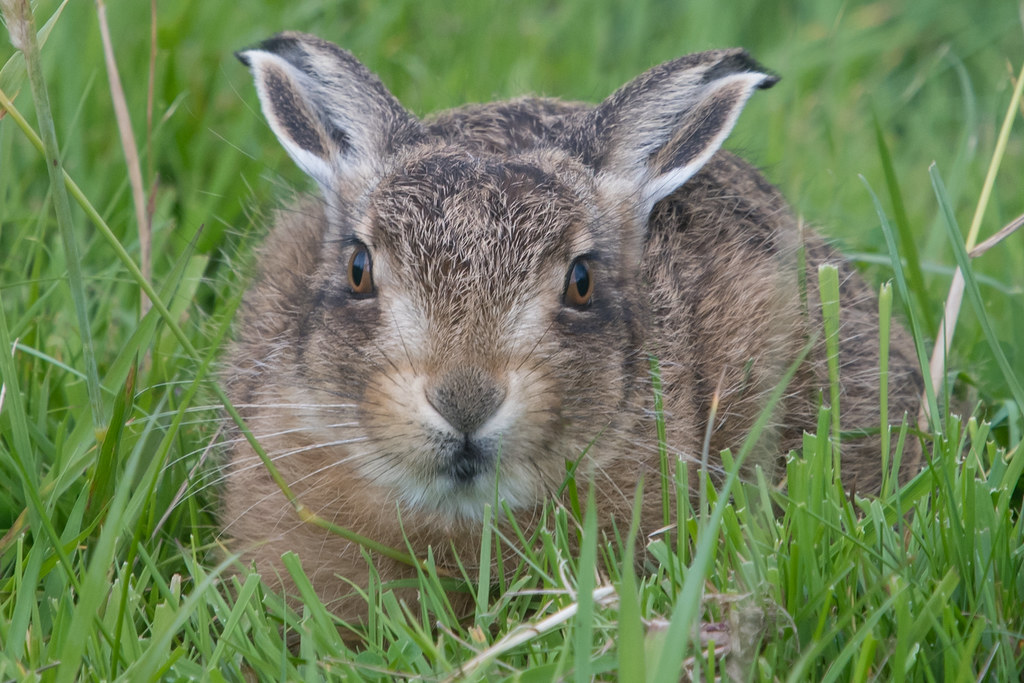
Tim writes: I spotted this young leveret crouching low in the grass near Holmfirth in late July. It was in a field next to a road, and I stayed on the road with the 420mm lens so as not to disturb it. Brown Hares give birth to about three litters each year, producing one to four leverets in each litter. Soon after giving birth, the mothers move 2-300m away, leaving their young leverets alone in the grass. She only visits them to suckle about 50 minutes after sunset. The young disperse up to 100m from their birthplace when they are a few days old, but the siblings meet up and play about 20 minutes before their mother arrives to feed them. She only feeds them once every 24 hours, and that feed only lasts about 5 minutes. Once they have fed the leverets disperse again. The young start grazing when they are 13-17 days old, and I can see that this one has been nibbling the nearby grass, so my guess of 2-3 weeks old is probably correct. The mother suckles them for about 5 weeks and they attain adult size after about 6 months. This youngster would certainly have been dependent on its mother. Bizarrely the mother licks up any urine produced by the leverets, presumably because the smell might attract predators, especially Fox. Foxes are the main predator of young Brown Hares in Britain and take a staggering 80-100% of leverets produced each year. This helps to explain why they are still uncommon when Does produce 4-12 young each year.
[registration_form]
Cracking photo. I’ve always liked Hares there is something very special about them, but I’m not sure I could explain it.
I know exactly what you mean – wonderful animals!
Hi Tim
80-100% predation is by foxes. You would think aerial predators had a better chance of seeing them. One has to ask where that data comes from.
I must admit to being puzzled when Buzzards first arrived here and we still had plenty of rabbits on our sandy land. I often saw Buzzards cruise over trees at the edge of fields over rabbits and make no attempt to catch any. Thinking back I don’t remember the rabbits taking much notice of the Buzzards either. Though a Buzzard used to perch for a period at twilight on a dead elm in the corner of a field over a rabbit warren. I always wondered if it was waiting for the baby rabbits to come out to play. I will have to keep a lookout, Buzzards are still here but rabbits are much reduced, most probably due to disease.
We were passing an old airfield of cereals and watched a Harrier quartering the ground. Later I asked about it and the farmer had seen Harriers taking hares. It was clay soil so not likely to be rabbits. I don’t know what sort of Harrier it was as it’s 14km from RSPB MInsmere. With Harrier numbers being what they are they cannot account for a lot of predation but with buzzards spreading they may account for more than that estimate. When was it made?
Norfolk is famous for having plenty of Hares. I understood.
Nice photos with interesting snippets which make you think.